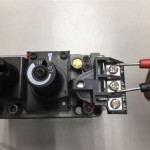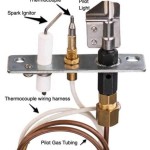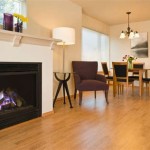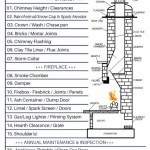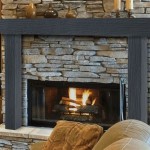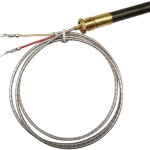Gas Fireplace for Basement Heat: A Comprehensive Guide
Basements, often relegated to storage space or recreation rooms, can be notoriously difficult to heat efficiently. Their below-ground location frequently results in colder temperatures compared to the rest of the house, leading to discomfort and potentially higher energy bills due to increased strain on the central heating system. A gas fireplace presents a viable solution for supplemental heating in basements, offering both warmth and aesthetic appeal. This article explores the considerations involved in using a gas fireplace for basement heating, including the different types available, factors affecting heating efficiency, installation requirements, and safety precautions.
Types of Gas Fireplaces Suitable for Basements
The selection of a gas fireplace for basement heating requires careful consideration of space constraints, venting options, and desired heating capacity. Several types of gas fireplaces are well-suited for basement applications, each with distinct advantages and disadvantages.
Direct Vent Gas Fireplaces: These fireplaces utilize a sealed combustion system, drawing air from outside the home for combustion and venting exhaust gases directly outdoors through a coaxial vent. This design eliminates the need for a traditional chimney and reduces the risk of indoor air pollution, making them a popular choice for basements. Direct vent fireplaces are highly efficient and can be installed on an exterior wall, simplifying the venting process. The sealed combustion also minimizes heat loss, ensuring that more of the generated heat is directed into the room.
Vent-Free Gas Fireplaces: Also known as ventless gas fireplaces, these units do not require a chimney or venting system. They burn gas very cleanly, with minimal emissions. However, it is crucial to ensure that vent-free gas fireplaces are equipped with oxygen depletion sensors (ODS) that automatically shut off the unit if oxygen levels in the room become dangerously low. Many jurisdictions have strict regulations regarding the use of vent-free gas fireplaces, and some may prohibit their installation in basements altogether. Careful consideration of local building codes and safety regulations is essential before opting for a vent-free model. While they offer flexibility in placement due to the lack of venting requirements, they are typically less efficient than direct vent models and may contribute to increased humidity levels in the basement.
B-Vent Gas Fireplaces: B-Vent gas fireplaces require a vertical vent, typically a metal pipe running through the roof. They draw combustion air from inside the room and vent exhaust gases through the B-vent. While these fireplaces are more efficient than vent-free models, they are generally less efficient than direct vent units. Installation can be more complex and costly due to the need for a vertical venting system. B-Vent fireplaces may be a suitable option for basements if a chimney or existing B-vent system is already in place, but new installations can be challenging and expensive.
Gas Fireplace Inserts: A gas fireplace insert is designed to be installed within an existing masonry fireplace. This option is relevant if the basement already has a traditional fireplace that is not being used or is inefficient. Gas fireplace inserts provide the convenience and efficiency of a gas fireplace while preserving the aesthetic appeal of the existing fireplace. They typically utilize direct vent technology, making them a safe and efficient choice for basement heating. Installation involves connecting the insert to a gas line and venting system, and may require professional assistance.
Factors Influencing Heating Efficiency in Basements
The effectiveness of a gas fireplace in heating a basement is influenced by several factors, including the size of the basement, insulation levels, fireplace BTU rating, and room layout.
Basement Size and Layout: The square footage and configuration of the basement directly impact the heating requirements. Larger basements require fireplaces with higher BTU ratings to effectively raise the temperature. Open floor plans may allow for better heat distribution, while partitioned basements may require multiple heat sources or strategically placed fans to circulate warm air. Consider the overall volume of the space, as well as the number of rooms and any areas that may be particularly prone to cold.
Insulation Levels: Proper insulation is crucial for maximizing the efficiency of any heating system, including a gas fireplace. Insulating the basement walls, ceiling, and foundation helps to prevent heat loss and maintain a consistent temperature. Adding insulation can significantly reduce the amount of energy required to heat the basement, leading to lower energy bills and improved comfort. It is advisable to assess the existing insulation levels and upgrade them as needed to optimize heating performance. Consider using rigid foam insulation for basement walls, as it is moisture-resistant and provides excellent thermal performance.
Fireplace BTU Rating: The British Thermal Unit (BTU) rating of the gas fireplace indicates its heating capacity. Selecting a fireplace with an appropriate BTU rating for the size of the basement is essential for achieving the desired heating effect. A fireplace with too low a BTU rating may not be able to adequately heat the space, while a fireplace with too high a BTU rating may lead to overheating and inefficient energy consumption. Consult with a qualified HVAC professional to determine the optimal BTU rating for the specific basement conditions.
Air Circulation: Effective air circulation is vital for distributing warm air throughout the basement. Using fans to circulate the air can help to prevent temperature stratification and ensure that all areas of the basement are evenly heated. Ceiling fans, floor fans, or small circulating fans can be strategically placed to improve air movement. Consider the placement of furniture and other obstructions that may impede airflow and adjust the layout accordingly.
Basement Ceiling Height: The height of the basement ceilings can affect heating efficiency. Lower ceilings generally result in better heat distribution, as the warm air doesn't have to travel as far to reach the occupied space. High ceilings may require more powerful fans or additional heat sources to effectively heat the entire room. Consider the ceiling height when selecting a gas fireplace and planning the overall heating strategy.
Installation and Safety Considerations
Proper installation and adherence to safety guidelines are paramount when installing and operating a gas fireplace in a basement. Incorrect installation can lead to safety hazards, including gas leaks, carbon monoxide poisoning, and fire risks.
Professional Installation: It is strongly recommended to hire a qualified and licensed gas technician to install the gas fireplace. A professional will ensure that the fireplace is installed correctly, in accordance with local building codes and manufacturer's instructions. The technician will also connect the fireplace to the gas line, install the venting system (if required), and test the unit for proper operation. Attempting to install a gas fireplace without proper training and experience can be dangerous and may void the manufacturer's warranty.
Gas Line Connections: The gas line connection must be performed by a qualified professional. Leaks can occur if not done properly. The gas line must be properly sized to accommodate the gas fireplace's requirements. A shut-off valve should be installed near the fireplace for easy access in case of emergencies. Regular inspection of gas line connections for leaks is essential for maintaining safety.
Carbon Monoxide Detection: Carbon monoxide (CO) is a colorless, odorless, and deadly gas produced by incomplete combustion. It is imperative to install carbon monoxide detectors in the basement and on every level of the home to provide early warning of CO buildup. Detectors should be placed near sleeping areas and tested regularly to ensure proper function. If the CO detector alarms, immediately evacuate the premises and contact emergency services. Never ignore a CO alarm.
Venting Requirements: The venting system must be properly installed and maintained to ensure safe and efficient removal of exhaust gases. Direct vent systems should be inspected regularly for blockages or damage. B-Vent systems require periodic inspection of the chimney or vent pipe to ensure proper draft. Vent-free gas fireplaces should only be used in well-ventilated areas and in accordance with manufacturer's instructions and local regulations.
Clearances and Combustible Materials: Maintaining proper clearances from combustible materials around the gas fireplace is essential to prevent fire hazards. Follow the manufacturer's instructions regarding minimum clearances to walls, floors, furniture, and other flammable items. Avoid storing combustible materials near the fireplace. Ensure that the area around the fireplace is kept clean and free of debris.
Regular Maintenance: Regular maintenance is necessary to ensure the safe and efficient operation of the gas fireplace. Schedule annual inspections and servicing by a qualified technician to clean the burner, inspect the venting system, and check for leaks or other problems. Clean the glass door regularly to maintain visibility and remove any buildup of soot or deposits.
Emergency Procedures: Familiarize yourself with emergency procedures in case of a gas leak or other fireplace-related emergency. Know how to shut off the gas supply and the proper steps to take in case of a fire. Keep emergency contact information readily available. Educate all household members about gas fireplace safety and emergency procedures.

Will A Fireplace Heat Basements We Love Fire

Basement Heating Options

Heating Your Basement

3 Ways To Heat A Basement Sheffield Homes Finished Basements And More

Fireplace In Basement 101 Everything Homeowners Must Know

Options To Keep Your Basement Warm All Winter Cressy Door Fireplace

10 Basement Heating Options To Keep You Warm Cozy In Winter

Will A Fireplace Heat Basements We Love Fire

Top 5 Benefits Of A Kozy Heat Direct Vent Fireplace Embers Custom Gas S

Direct Vent Vs Ventless Gas Fireplaces Woodlanddirect Com
Related Posts

